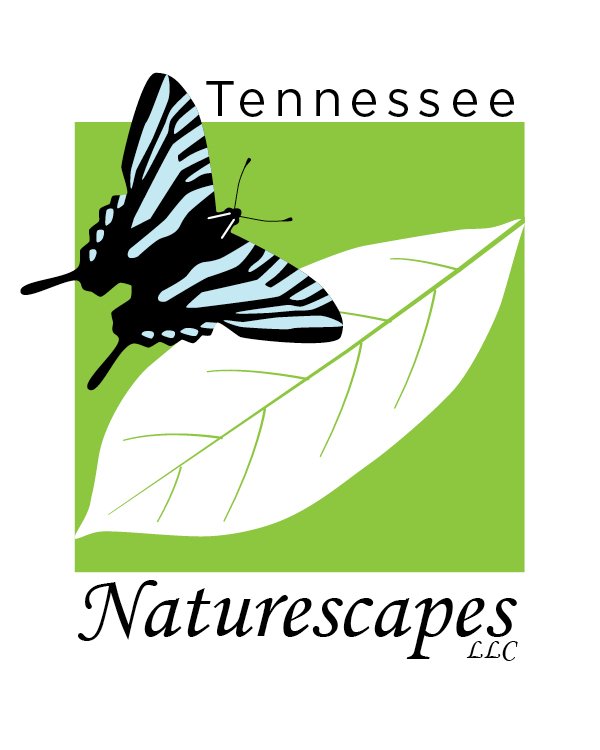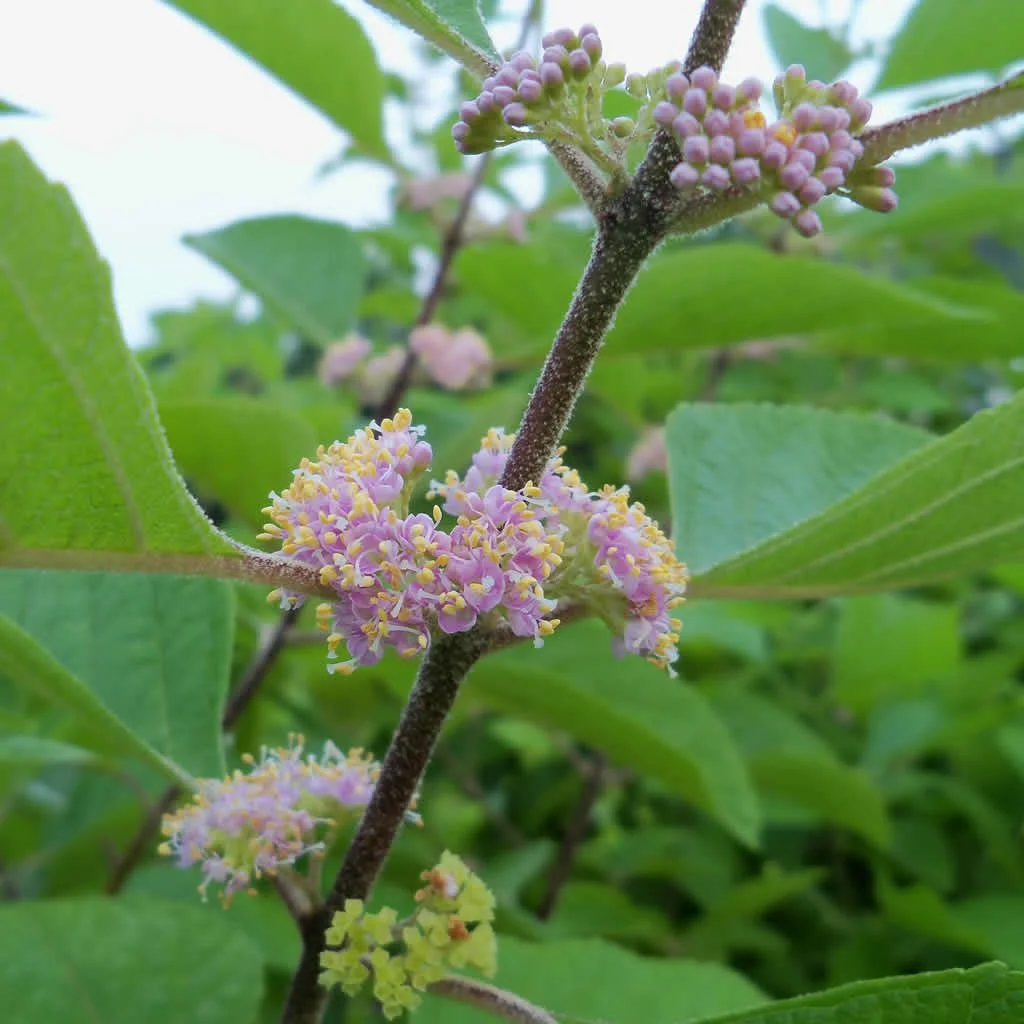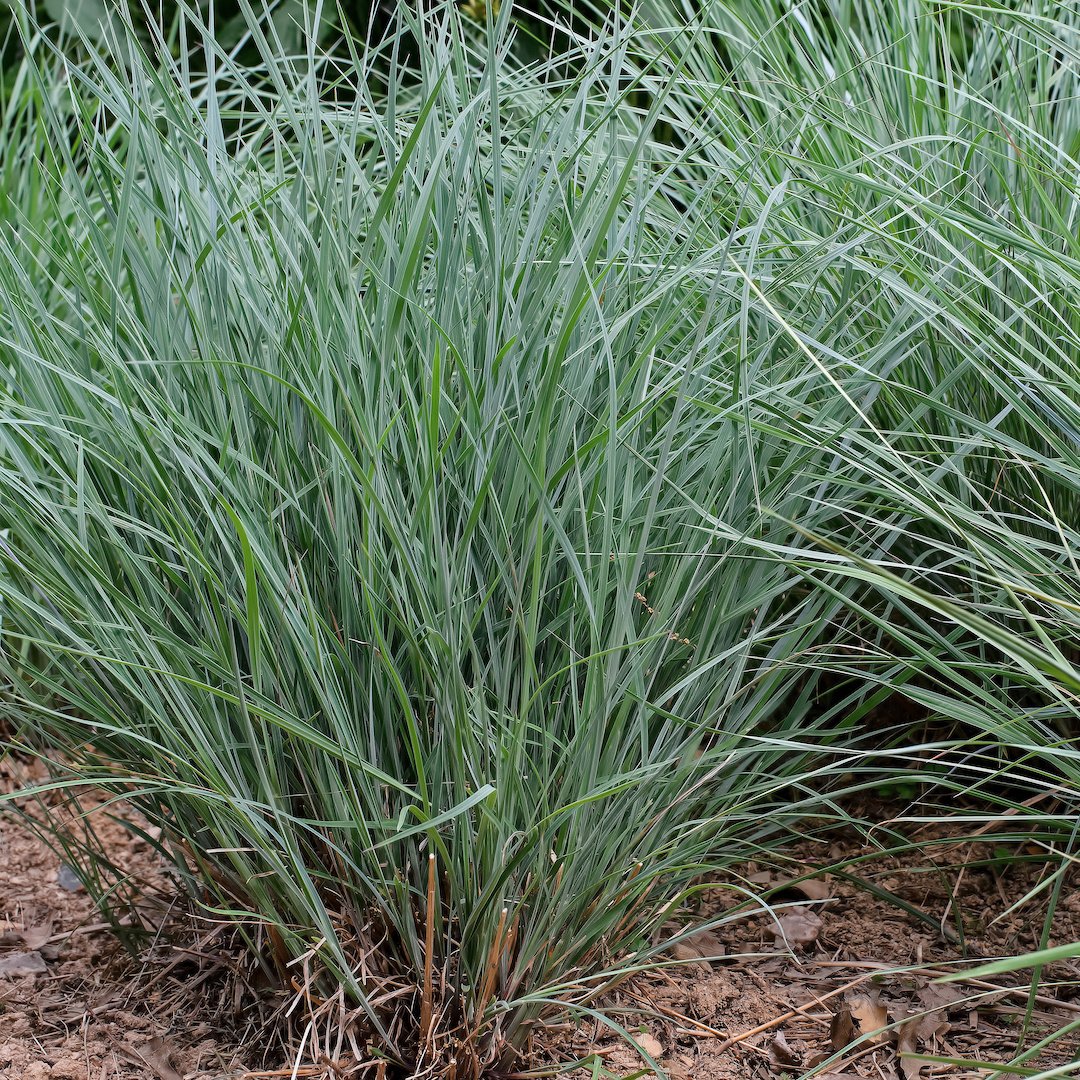Callicarpa americana (American Beautyberry)
GARDEN SITE: ☀️-⛅. Moist clay or sand enriched soil with organic matter.
SIZE: 3-8 ft. SPREAD: 2-6 ft.
FLOWERS: Small pink flowers June-August that become spectacular magenta colored fruit in September.
WILDLIFE: Attracts pollinating insects and the berries are an important food source for many wildlife species such as American Robin, Purple Finch, Eastern Towhee, Brown Thrasher, armadillos, foxes, opossum, raccoons and squirrels.
LARVAL HOST TO: Spring Azure butterfly and Snowberry Clearwing moth
ZONE: 6-10
DISTRIBUTION: AL , AR , FL, GA, KY, LA, MD, MS, MO, NC, OK, SC, TN, TX, VA
If you enjoy watching birds and wildlife this elegant shrub is a must have! Grown for its clusters of gorgeous, magenta colored berries, American Beautyberry has a graceful, arching growth habit that makes a wonderful back ground or specimen plant. The delicate flowers of this shrub add a subtle blush of pink to the summer garden and provides a source of pollen and nectar to many insects. The fragrant foliage turns a lovely shade of pale gold adding rich contrast to its deeply colored berries. When crushed, the leaves may act as a natural repellent to mosquitos, fire ants and ticks. American Beautyberry is at home in a pollinator, native, winter and woodland edge garden.
NOTE: While self fertile, a better berry yield can be expected when two or more shrubs are planted.
GARDEN SITE: ☀️-⛅. Moist clay or sand enriched soil with organic matter.
SIZE: 3-8 ft. SPREAD: 2-6 ft.
FLOWERS: Small pink flowers June-August that become spectacular magenta colored fruit in September.
WILDLIFE: Attracts pollinating insects and the berries are an important food source for many wildlife species such as American Robin, Purple Finch, Eastern Towhee, Brown Thrasher, armadillos, foxes, opossum, raccoons and squirrels.
LARVAL HOST TO: Spring Azure butterfly and Snowberry Clearwing moth
ZONE: 6-10
DISTRIBUTION: AL , AR , FL, GA, KY, LA, MD, MS, MO, NC, OK, SC, TN, TX, VA
If you enjoy watching birds and wildlife this elegant shrub is a must have! Grown for its clusters of gorgeous, magenta colored berries, American Beautyberry has a graceful, arching growth habit that makes a wonderful back ground or specimen plant. The delicate flowers of this shrub add a subtle blush of pink to the summer garden and provides a source of pollen and nectar to many insects. The fragrant foliage turns a lovely shade of pale gold adding rich contrast to its deeply colored berries. When crushed, the leaves may act as a natural repellent to mosquitos, fire ants and ticks. American Beautyberry is at home in a pollinator, native, winter and woodland edge garden.
NOTE: While self fertile, a better berry yield can be expected when two or more shrubs are planted.
GARDEN SITE: ☀️-⛅. Moist clay or sand enriched soil with organic matter.
SIZE: 3-8 ft. SPREAD: 2-6 ft.
FLOWERS: Small pink flowers June-August that become spectacular magenta colored fruit in September.
WILDLIFE: Attracts pollinating insects and the berries are an important food source for many wildlife species such as American Robin, Purple Finch, Eastern Towhee, Brown Thrasher, armadillos, foxes, opossum, raccoons and squirrels.
LARVAL HOST TO: Spring Azure butterfly and Snowberry Clearwing moth
ZONE: 6-10
DISTRIBUTION: AL , AR , FL, GA, KY, LA, MD, MS, MO, NC, OK, SC, TN, TX, VA
If you enjoy watching birds and wildlife this elegant shrub is a must have! Grown for its clusters of gorgeous, magenta colored berries, American Beautyberry has a graceful, arching growth habit that makes a wonderful back ground or specimen plant. The delicate flowers of this shrub add a subtle blush of pink to the summer garden and provides a source of pollen and nectar to many insects. The fragrant foliage turns a lovely shade of pale gold adding rich contrast to its deeply colored berries. When crushed, the leaves may act as a natural repellent to mosquitos, fire ants and ticks. American Beautyberry is at home in a pollinator, native, winter and woodland edge garden.
NOTE: While self fertile, a better berry yield can be expected when two or more shrubs are planted.
















